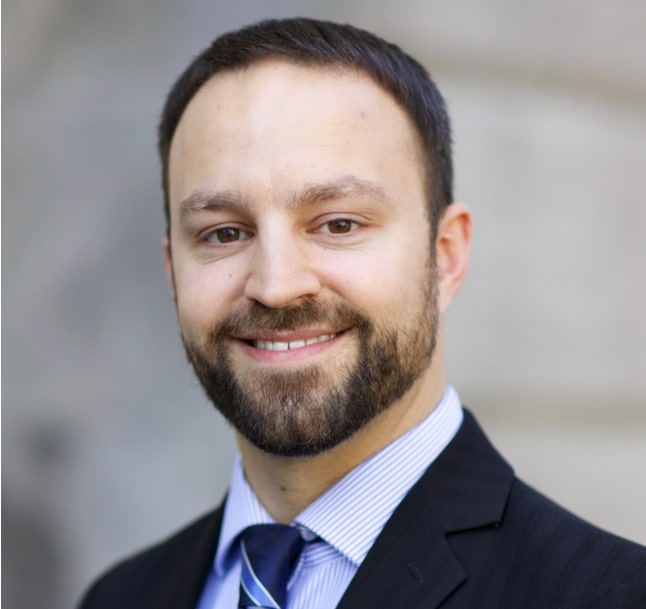There are many different types of campaigns schools can run, and schools that run the optimal mix of campaigns see the most success. One type of campaign schools can take advantage of when January comes around is a “Fresh Start” Campaign (also known as a New Year’s campaign). This campaign should be run alongside your other campaigns, such as your evergreen campaigns that run all year round.
Why is it called a Fresh Start Campaign? Because January is the time of year when people are thinking about how they want their life to change, setting goals (or resolutions) and taking new actions. This is why gym memberships soar in January. In behavioral science, this is called the “Fresh Start Effect”.
To capitalize on this psychological effect, schools should run campaigns in January and February with creative themes based on ideas like “New Year, New You” or “Make This Year YOUR Year”. The trick is to create messaging around this theme that is unique and matches your institution’s brand tone and voice.
What do you promote with this type of campaign? A Fresh Start Campaign can be used to promote a specific program or your institution in general, as long as the call to action drives potential students to look for the right program for them – the one that will help them make their New Year’s aspirations a reality.

In 2022, Emory University used “new year, new you” messaging to promote its Continuing Education programs.

Example ad from ILAC with messaging that is a good fit for a Fresh Start Campaign.

Example ad from ILAC with messaging that is a good fit for a Fresh Start Campaign.
While it’s been used year-round, ILAC uses messages in its ads that are a good fit for a Fresh Start Campaign. The right text alongside visuals like these could make the perfect
Where do you run this type of campaign? This type of campaign can be run on any network, including Google ads (Search, and Discovery for remarketing), Facebook, Instagram, LinkedIn and TikTok, and anywhere else for that matter.
New Year’s Campaign for Higher Education Phase 1: Build Your Audience
When we run these campaigns, we typically do so in two phases. First is a traffic campaign. The purpose of the traffic campaign is to build an audience. When users click on your ads on Google or social networks and visit your landing page, a cookie is dropped onto their browser, which allows you to retarget them. All users who visited your landing page from a certain source would form an audience in your ad platform or Google Analytics (depending on how the audience is set up) based on that behavior. We call this an engagement audience. This part of the campaign is where your messaging should focus most heavily on using New Year’s/fresh start themes and invite users to discover a certain program to explore programs to find the right one.
When using search for this part of the campaign, since the goal is to maximize traffic, we aim to rank for keywords around goals, goal setting, New Year’s resolutions, dreams, and other keyword phrases related to change and aspirations. These are what we call low-intent keywords. The idea is to capture users when searching and present the idea that your course or program may be what they need.
New Year’s Campaign for Higher Education Phase 2: Drive Action
In the second phase, we retarget the audience you’ve built, reiterating the fresh start messaging, and adding in more urgent messaging such as deadlines and bottom-of-the-funnel calls to action like “Apply Now.”
When running phase 2 on Google Search, we want to use high-intent keywords, so we capture users actively searching for courses or programs like yours.
We also use what’s called a Performance Max campaign. Using this type of campaign, your ads can appear across all of Google’s ad inventory and formats from a single campaign, depending on where Google’s AI determines you’ll get the most bang for your buck. Google describes this campaign as “designed to complement your other campaigns to help you find more converting customers across all of Google’s channels like YouTube, Display, Search, Discover, Gmail, and Maps.”
Why do we want to build an audience and then retarget? Because only a small percentage of users will take the action you want on the first, second, third contact etc. It will take multiple touch points for the majority of your audience to inquire or apply, so we want to be sure we are reaching them multiple times. If your landing page invites students to inquire, you can follow up by email, but don’t rely only on email.
Email is only one channel, it’s easy to ignore, and younger generations are not all fans of email. Use text or WhatsApp messages to reach out as well, but don’t let those replace remarketing ads. Even when you’ve captured a user’s contact information and can follow up directly, remarketing ads can reach them where they are, adding extra touchpoints, and nudging them to inquire or apply.
Add Organic Social to Your New Year’s Campaign for Maximum Impact
To bolster the effectiveness of your Fresh Start Campaign, we recommend publishing a series of posts on your social channels and even boosting those posts for added impact.

Director of Business Development







